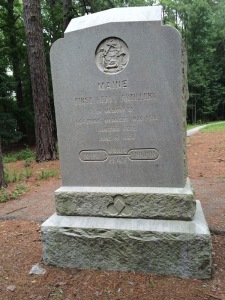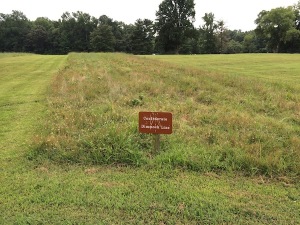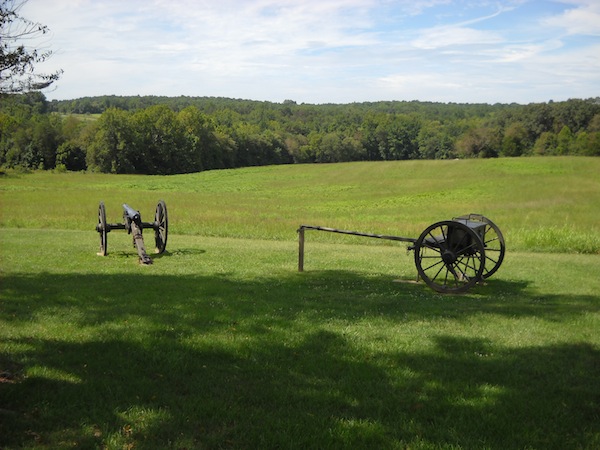From 1864 to 1865, in a city on the southern outskirts of Richmond, Va., a 10-month siege by Union soldiers took place in an attempt to cut off supplies to the Confederate soldiers within. In a strategic move, General Ulysses S. Grant decided to take the city of Petersburg, the second largest city in Virginia during the Civil War, in order to either starve or drive out the Confederate soldiers. This move would eventually lead the Confederacy to Appomattox Court House, where Robert E. Lee and his army surrendered.
This is the subject matter of the exhibit “From Fights to Rights.” The exhibit is the newest installment — and last Civil War feature — of a series of exhibits showcased at Earl Gregg Swem Library Special Collections.
“The idea was to commemorate the 150th anniversary of the Civil War and also tie that into the civil rights movement,” manuscripts and rare books librarian Susan Riggs said. “We wanted a parallel look at those two things.”
The Siege of Petersburg, not often discussed in traditional history classes, was a pivotal period of the Civil War, as it eventually led to the surrender at Appomattox and the end of the war. While seemingly insignificant, this 10-month siege ended up being worth the trouble.
“What makes the Siege of Petersburg unique [is] a couple of things,” Riggs said. “There was the Battle of the Crater where coal miners in the Union Army tried to tunnel underneath one of the Confederate forts. There were also many African American troops in the Union Army that were involved in the fighting.”

As Riggs summarizes, this siege consisted of a total of six battles, 11 engagements, 44 skirmishes and six assaults. Union troops tried a variety of different things but could not break into the city until April 2, when Lee decided to leave Petersburg and head south.
When it comes to planning and researching for an exhibit, the librarians are constrained by what is available. Luckily for Riggs, however, she had quite a few resources at her disposal.
Swem and Special Collections have a number of sources about Petersburg and the siege, including authentic letters and papers documenting the efforts, artifacts uncovered from the site of the siege near Richard Bland College, and multiple books that explicitly discuss the siege in relation to the Civil War.
Some of the items are borrowed or on loan, some of them bought and some were already in the library’s collection.
“Most of the things in the collection were gifts. However, we do have private funds that are earmarked for the purchase of manuscripts and books,” Riggs said.
For example, Special Collections has in its possession General Joseph E. Johnston’s papers. This correspondence documents a plan hatched between him and Lee for the Confederate Army in Petersburg to move south and join Johnston. However, that plan was never implemented. Special Collections also has a diary written by Charles Campbell, a schoolteacher and librarian who lived in Petersburg during the siege. Riggs was even able to use a recently purchased set of letters written by a private in the Union, Frederick C. Hale.
“In his letters, he talks about using his telescope to look at the clock tower in Petersburg. The army used this to tell time from outside of the city,” Burger Archives Specialist Jennie Davy said.

One thing unique to this exhibit is that it encourages students to visit these sights, as they are all within driving distance. Some of the photos that will be included in the exhibit are actually modern photos of the locations taken by Riggs.
“It’s easier to understand battles when you’re on the ground where they were fought. It gives you a feel for the area that you just can’t get any other way. It also helps you think about why wars happen and what the result of them is,” Riggs said.
Each of these exhibits is created and set up in a way that highlights pieces of American, Virginian and College of William and Mary history. It can thus help students garner a better understanding of the subject, see the bigger picture of such a seemingly small occurrence, and perhaps learn something new in the process.
“One of the things I like about history is that there are a lot of areas of grey. There isn’t one right answer or one cause; it is a combination of forces that shaped our history,” Davy said. “These exhibits are one way to look at the human experience and the mindset of people. It also forces you to think critically about your actions today.”
Exhibit setup is much more intricate than one might imagine. When arranging the display cases, Davy has to worry about more than just simple aesthetics.
“The way exhibits present information changes the way the audience perceives it. The way an exhibit can incorporate images and artifacts makes the viewer fully experience the historical narrative,” student assistant Kelly Manno ’15 said.

Some placement choices are practical, but some are visual. Different cases have different lighting that has to be utilized with specific documents, and there is a certain level of accessibility and practicality to consider when putting the exhibits together.
“We wouldn’t want to put letters on top of the tall cases, because people can’t see them. When we want people to take a closer look, we put them near the bottom,” Davy said. “Our main idea, though, is to advance the narrative and tell a story about what happened.”
Davy also has help in setting up her exhibits by students such as Manno.
“I assist her with creating the physical exhibit, such as making labels, mounting the content, and occasionally setting up or taking down some of the exhibits you see in the rotunda,” Manno said.
This exhibit is now officially on display and will be in Special Collections until May 2015.

